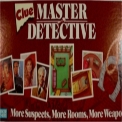Saturday, July 28: Mystery Masterclass – Jon L. Breen
RULES TO LIVE BY UNLESS YOU IGNORE THEM
Jon L. Breen writes review columns for Ellery Queen’s Mystery Magazine and Mystery Scene. He might not tell you, but he was won two Edgars, two Anthonys, a Macavity, an American Mystery Award, and an American Crime Writers League Award. His most recent books are the novel Eye of God (Perseverance Press) and the collection Kill the Umpire: The Calls of Ed Gorgon (Crippen & Landru).
by Jon L. Breen
In the last five years before retirement, my day job was teaching English composition at a community college. Of the courses I taught, I believe I did the poorest job with creative writing. The classes filled, and the students and I had a good time, but I don’t know how much I conveyed to them that was useful. Recently in this space Robert Lopresti quoted Gore Vidal as having nothing to say but plenty to add. Similarly, I can’t tell anyone how to write but I can talk around the subject all day.
While it’s an exaggeration to say there are no rules in writing, certainly there are exceptions to nearly every rule. Take the following familiar writing truisms.
![]() First, write what you know. Yeah, I guess so, but for most of my professional career I was a librarian, and all my attempts at creating a librarian detective proved unsuccessful. The only one to be published was a short private eye parody called “The Dewey Damsel System,†which appeared in somewhat altered form in the April, 1971 issue of the late, lamented periodical Wilson Library Bulletin. (It’s also in my out-of-print 1982 parody collection Hair of the Sleuthhound.) The protagonist was a private eye working for a public library system, and I wanted to call him Mel Dewey. Melvil Dewey, said the editors, was too sacred a figure to be kidded in this way, so I used an anagram instead and called him Ev Millweedy. The punishment for the perp (“When somebody’s defacing library books, sweetheart, a librarian’s expected to do something about it,†Ev tells her) was to be revoking her library card—permanently. But no, the editors said their readers took the right to a library card too seriously to make fun of, so I had to consign her to licking labels in the library basement instead.
First, write what you know. Yeah, I guess so, but for most of my professional career I was a librarian, and all my attempts at creating a librarian detective proved unsuccessful. The only one to be published was a short private eye parody called “The Dewey Damsel System,†which appeared in somewhat altered form in the April, 1971 issue of the late, lamented periodical Wilson Library Bulletin. (It’s also in my out-of-print 1982 parody collection Hair of the Sleuthhound.) The protagonist was a private eye working for a public library system, and I wanted to call him Mel Dewey. Melvil Dewey, said the editors, was too sacred a figure to be kidded in this way, so I used an anagram instead and called him Ev Millweedy. The punishment for the perp (“When somebody’s defacing library books, sweetheart, a librarian’s expected to do something about it,†Ev tells her) was to be revoking her library card—permanently. But no, the editors said their readers took the right to a library card too seriously to make fun of, so I had to consign her to licking labels in the library basement instead.
![]() Second, never discuss work in progress. Again, generally wise, though as great a writer as Elmore Leonard blows it to smithereens in an interview in the current issue of The Strand Magazine. Asked what he’s working on, he tells interviewer Andrew Gulli the whole plot of his current project right up to the point he has reached in the writing. On the other hand, my only anecdote about discussing work in progress provides a cautionary note. At a mystery writers’ gathering in the 1970s, I shared with a well-known novelist and a prominent mystery scholar my idea for a ghost story in which a used book dealer discovers a talent for authentically signing the names of dead authors to first editions of their books. When the story reached fruition in my 1984 novel The Gathering Place, the novelist (who was also a reviewer, a fine and generous man but one given to embellishing the truth to make a better story) shared with me a review of the book in which he recalled our discussion. In his version, however, there was a whole roomful of prominent writers kicking the idea around, and I was the one out of this group of informal collaborators who actually decided to write it. In other words, not necessarily my original idea at all. I wouldn’t have stopped him from running the review, but the magazine it was written for folded before it appeared.
Second, never discuss work in progress. Again, generally wise, though as great a writer as Elmore Leonard blows it to smithereens in an interview in the current issue of The Strand Magazine. Asked what he’s working on, he tells interviewer Andrew Gulli the whole plot of his current project right up to the point he has reached in the writing. On the other hand, my only anecdote about discussing work in progress provides a cautionary note. At a mystery writers’ gathering in the 1970s, I shared with a well-known novelist and a prominent mystery scholar my idea for a ghost story in which a used book dealer discovers a talent for authentically signing the names of dead authors to first editions of their books. When the story reached fruition in my 1984 novel The Gathering Place, the novelist (who was also a reviewer, a fine and generous man but one given to embellishing the truth to make a better story) shared with me a review of the book in which he recalled our discussion. In his version, however, there was a whole roomful of prominent writers kicking the idea around, and I was the one out of this group of informal collaborators who actually decided to write it. In other words, not necessarily my original idea at all. I wouldn’t have stopped him from running the review, but the magazine it was written for folded before it appeared.
![]() Third, always go the second mile in doing research. How could I argue with this one, right? But I sold eight stories in a period of about three years to Ellery Queen’s Mystery Magazine about baseball umpire Ed Gorgon without ever actually meeting an umpire or going behind the scenes at a ballpark. After I wangled press credentials to Anaheim Stadium for one game and actually talked to some umps, I found I was unable to write another Ed Gorgon for about four years. (In fairness, when I finally did return to him, I used some of what I picked up that day at the ballpark.) Then there was my short story “The Auteur Theory.†It had a courtroom scene, and it occurred to me I should run it by my friend Mike (writing name Francis M.) Nevins, a law professor at St. Louis University. But no, I just sent it off as it was. It sold to Alfred Hitchcock’s Mystery Magazine and appeared in the January 1978 issue. When it appeared in print, Mike assured me, “No judge in the world would have allowed that testimony!†The lesson? If I’d shown it to him first, I might have lost the sale. And, of course, my defense is that there are plenty of nutty judges around who might allow any kind of nonsense in their courtrooms, whatever might happen on appeal.
Third, always go the second mile in doing research. How could I argue with this one, right? But I sold eight stories in a period of about three years to Ellery Queen’s Mystery Magazine about baseball umpire Ed Gorgon without ever actually meeting an umpire or going behind the scenes at a ballpark. After I wangled press credentials to Anaheim Stadium for one game and actually talked to some umps, I found I was unable to write another Ed Gorgon for about four years. (In fairness, when I finally did return to him, I used some of what I picked up that day at the ballpark.) Then there was my short story “The Auteur Theory.†It had a courtroom scene, and it occurred to me I should run it by my friend Mike (writing name Francis M.) Nevins, a law professor at St. Louis University. But no, I just sent it off as it was. It sold to Alfred Hitchcock’s Mystery Magazine and appeared in the January 1978 issue. When it appeared in print, Mike assured me, “No judge in the world would have allowed that testimony!†The lesson? If I’d shown it to him first, I might have lost the sale. And, of course, my defense is that there are plenty of nutty judges around who might allow any kind of nonsense in their courtrooms, whatever might happen on appeal.
![]() Fourth, use plenty of details. This is more of a general composition rule than one applied specifically to creative writing; we drummed it into our students writing their freshman English essays: “Details and examples! Details and examples!†But it’s quite possible to overdo it. I had a student who took the advice to heart in writing about a fishing trip. We learned when he got up in the morning, how the weather looked, what he had for breakfast, how he dressed to go fishing, what time his friend arrived, what kind of car they drove in, what route they took to the lake, what the traffic was like, what they’d packed for lunch, and so forth. By the time he got around to the actual fishing, though, my student had run out of both time and space, and the conclusion amounted to “I caught two fish, my friend caught one, and we went home.†While a writer of mystery fiction is unlikely to commit the second half of this blunder, many novelists are constantly committing the first, filling page upon page with irrelevant detail. If it’s well done, we might enjoy it anyway; if it isn’t, it’s deadly to the reader.
Fourth, use plenty of details. This is more of a general composition rule than one applied specifically to creative writing; we drummed it into our students writing their freshman English essays: “Details and examples! Details and examples!†But it’s quite possible to overdo it. I had a student who took the advice to heart in writing about a fishing trip. We learned when he got up in the morning, how the weather looked, what he had for breakfast, how he dressed to go fishing, what time his friend arrived, what kind of car they drove in, what route they took to the lake, what the traffic was like, what they’d packed for lunch, and so forth. By the time he got around to the actual fishing, though, my student had run out of both time and space, and the conclusion amounted to “I caught two fish, my friend caught one, and we went home.†While a writer of mystery fiction is unlikely to commit the second half of this blunder, many novelists are constantly committing the first, filling page upon page with irrelevant detail. If it’s well done, we might enjoy it anyway; if it isn’t, it’s deadly to the reader.
![]() Fifth, in a detective story, play fair with the reader. This is one that is still at least given lip service, but its meaning has undergone a subtle change over the years. It used to mean, provide some clues along the way that will permit the very sharp reader to logically figure out the solution before the detective elucidates it. Now, many seem to think it means telling the reader everything the same time as the detective learns it. Thus, if the detective finds an old diary in chapter 37 that reveals who the murderer is, and the reader finds this out at the same time, the author has played fair with the reader. Well, maybe. But it should mean more than that. In the current market, I’m apt to applaud any novel that provides even one fair-play clue to the reader; the kind of intricate edifices the Golden Age masters routinely provided is too much to expect.
Fifth, in a detective story, play fair with the reader. This is one that is still at least given lip service, but its meaning has undergone a subtle change over the years. It used to mean, provide some clues along the way that will permit the very sharp reader to logically figure out the solution before the detective elucidates it. Now, many seem to think it means telling the reader everything the same time as the detective learns it. Thus, if the detective finds an old diary in chapter 37 that reveals who the murderer is, and the reader finds this out at the same time, the author has played fair with the reader. Well, maybe. But it should mean more than that. In the current market, I’m apt to applaud any novel that provides even one fair-play clue to the reader; the kind of intricate edifices the Golden Age masters routinely provided is too much to expect.
Did I wander off the point? Now you know what my creative writing classes were like.





















Jon, it’s great to see you here on this forum. I’m honored and humbled to be sharing this pulpit with you.
Great column. How true that there’s a time and. a place to break (most) rules. I like your fifth point, about Fair Play. A good crime story needn’t be a fair play mystery, but it doesn’t hurt. Folks like Bill Pronzini prove that a fair play plot and great, crisp writing are NOT mutually exclusive, and that Fair Play isn’t dead.
It never fails to surprise (and depress) me to learn how many contemporary mystery writers don’t even know what the term “Fair Play” means. In my more cranky moments, I write it off to laziness. To write a genuine mystery (i.e. a story with actual detection and a mystery to solve) requires plotting, an artform that has become increasingly scarce.
Thanks, Steve. Oddly enough, Marv Lachman tells the story of being asked by one of the best-known writers on the current scene what he meant by fair play. The strange thing is that the questioner was one of the few who actually practice it!
Wonderful to see you, Mr. Breen. I’ve sorely missed “real” mysteries. I find myself returning to the older, English mysteries because I find modern stories are like white bread… no flavor, no nutrition, no fiber.
We’re complaining about what mysteries aren’t, and I agree. Maybe that questioner was asking if the popular writer had a clue as to what a mystery is? (or was?)
One of the few things I liked about Dan Brown’s novels (the 2 I’ve read), is that he does provide clues which can be figured out. I even recognized the Fibonacci series. (There! I finally get a chance to brag about it!) With one or two clues, I was almost drumming my fingers waiting for the hero to “get it”. (READ THE NOTE BACKWARDS, DUMMY!)
Do you think it’s writers or publishers (or both) who aren’t fulfilling the promise of what mysteries should be?
I’m glad to see a blog that’s respectful but does more than puff pieces.
Great column! Being fair with the reader, I think, is the golden rule to crime and mystery. After that it’s a balancing act–give too much away and reader will lose interest; give too little away and the reader will curse you when he or she gets to the end.
Jon, I taught creative writing for two or three semesters. Or tried to. The more I tried, the more I realized I didn’t have a clue as to what I was doing. So I turned the class over to someone else and never regretted it.
Thanks, Bill! If you had a similar experience, I feel much better.
I was aghast when a crime genre writer told me true mysteries were passé, that they had been replaced by new styles and new paradigms because people didn’t want to ‘work’ at solving mysteries.
To me, that ‘work’ was the heart of the pleasure that set mysteries above and apart from everything else.
Aargh! Not fair! You guys in the comments are stealing a blog entry I have half written! Do you think these things grow on trees?
Guess I’ll put it aside for a few weeks and see if it looks new again.
Terrific column, Jon. I haven’t read your umpire stories since they first appeared in the magazine, but I remember two of them vividly (the player who got knocked out with a baseball bat and the KKK clue.)
Cnsidering my memory (what memory?) those must have been pretty memorable stories.